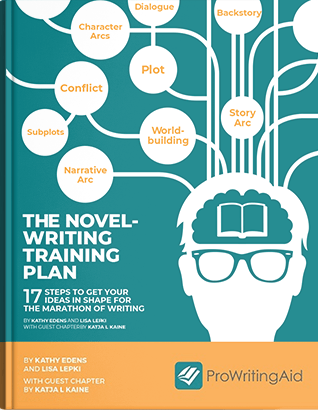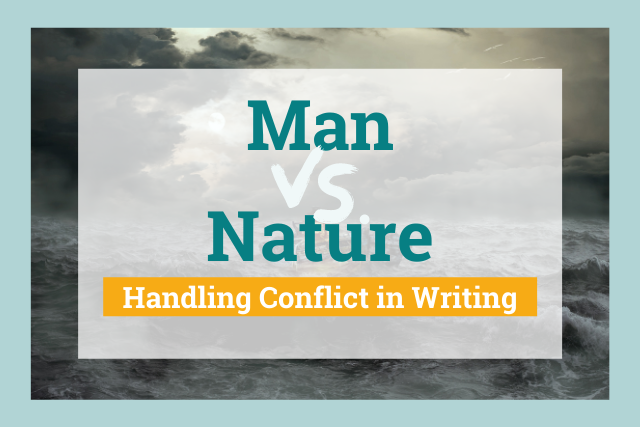
A story without conflict isn’t much of a story at all. There are seven main types of conflict in fiction, and most stories can fall into one or more of these categories.
One of these conflicts is known as man vs. nature.
Man vs. nature is a story that writers come back to over and over.
Humans have been in conflict with nature since the dawn of humankind. Sometimes nature wins, and sometimes humans do.
Because it’s grounded in a reality we all know, man vs. nature can provide endless possibilities for fictional story ideas.
In fact, some of your favorite books and movies might feature this conflict!
What Is Man vs. Nature?
The man vs. nature conflict is when the protagonist, either alone or together with the other characters, is in direct opposition to the forces of nature.
There is some event or situation in the natural world that is causing a problem. If more than one character is affected, your characters must work together to overcome the problem.
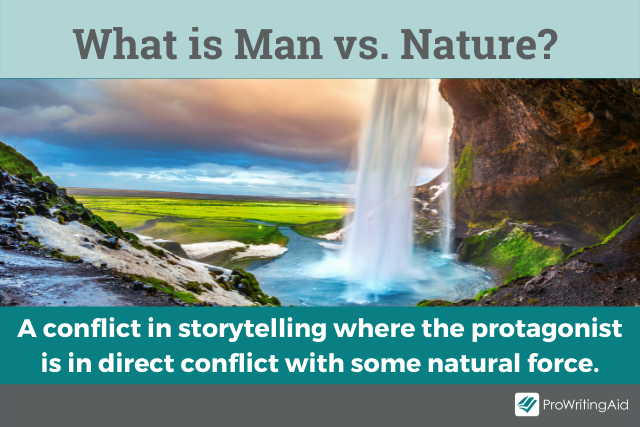
While the story will still have antagonists, the major conflict is with nature itself. This might occur in the form of a natural disaster like a tornado or blizzard. Drought and famine are common in literature.
There could be a supernatural force behind the nature conflict, although the supernatural element is not the main player in the conflict. The man vs. nature conflict can also be about when a character faces resistance from a specific element of nature in achieving their goals.
Sometimes, you might see the natural world as the “good guy” in these stories, while other times you might root for the characters.
It’s important to note that man vs. nature does not refer to only male characters. In this sense, “man” refers to humankind.
Modern scholars and writers often refer to the conflict as person vs. nature or character vs. nature. We’ll be using these interchangeably in this article.
Is Man vs. Nature a Theme?
You might hear people refer to the theme of man vs. nature. However, it’s less a theme and more a conflict.
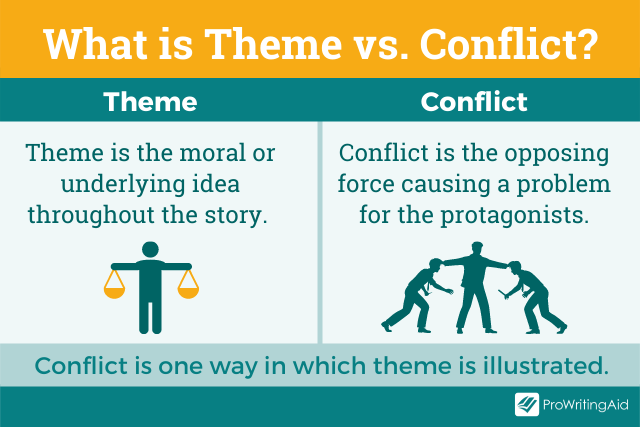
A good story has several major components: a theme, a message or moral, a conflict, character goals and motivations, and a plot structure.
The conflict drives the overall story and pushes the characters into action. Theme, on the other hand, is the overall meaning of a story. The theme is conveyed through different elements like characters, setting, and conflict.
In person vs. nature conflicts, there are many themes that might appear. Here are some common themes that fit well with person vs. nature stories:
- Perseverance/the indomitable human spirit
- Change vs. tradition
- Pride as a downfall
- Greed as a downfall
- Rebirth
- Chaos vs. order
- Dangers of materialism, capitalism, or technology
- Inevitability of death and/or destruction
- The power of nature
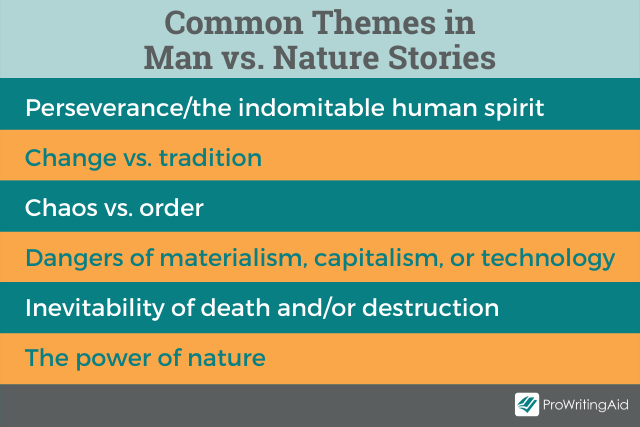
This is by no means an exhaustive list of themes that might feature in a character vs. nature conflict.
The theme works with the conflict, and the man vs. nature conflict highlights the theme. Together, these provide a message to the reader.
What Are the Major Types of Conflict in Literature?
Man vs. nature is just one type of conflict. There are seven major types recognized by most writers and scholars. They are:
- Person vs. person
- Person vs. society
- Person vs. nature
- Person vs. supernatural
- Person vs. technology
- Person vs. self
- Person vs. destiny
Each of these can be the underlying conflict in a great story, no matter the medium or genre.
Why Is Man vs. Nature a Great External Conflict?
Conflicts in a story can be internal or external. The character vs. nature conflict is an example of external conflict. It’s a conflict that writers come back to time and time again. Why?

Man vs. nature is an excellent external conflict for a story for many reasons. First of all, there are endless ways that nature can provide a problem for your characters.
If your characters are facing natural disasters, there are plenty to choose from.
Tornadoes, hurricanes, floods, tsunamis, blizzards, avalanches, volcanic eruptions, dust storms, and wildfires can be excellent catalysts for your characters to do something.
Droughts and famines, whether as natural disasters or effects of a natural or man-made disaster, are also great story fodder.
The effects of mankind trying to control nature is another conflict that comes up in real life and in stories—overfarming, deforestation, draining of resources, and pollution can provide ample story ideas.
When a character faces resistance or struggles in parts of nature, like surviving in new or hostile environments, the story can be a great way to explore other conflicts and themes that are more internal.
The natural force becomes a metaphor for inner conflict.
While some fantasy stories may use a supernatural force as the catalyst for the conflict, the overall conflict should lie in a natural force.
Otherwise, the main conflict of the story would be person vs. supernatural.
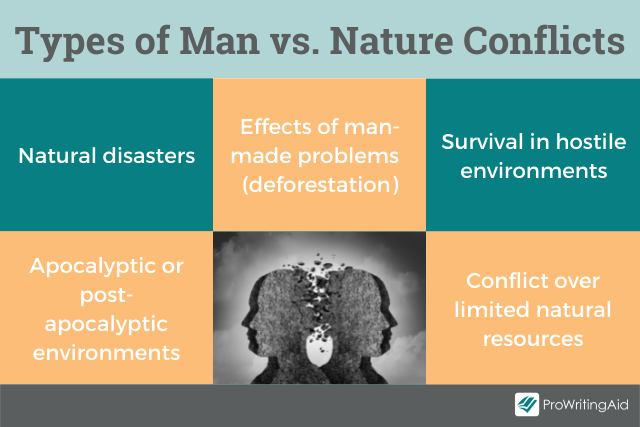
Why are there so many types of conflict in nature? Because humans are inextricably linked to nature.
We all deal with the effects of natural forces, whether it’s climate change, the weather, disasters, or just our environment. It’s something familiar that has been part of our entire history.
We can apply that same familiarity to any story involving nature. The characters don’t have to be human, and the world doesn’t have to be planet Earth.
I’ve never been trapped in a desert on an alien planet, but I’ve felt extreme heat sickness. I’ve never crossed a frozen tundra, but I have lost heat during an ice storm in a place that is woefully underprepared for freezing weather.
Man vs. nature needs strong sensory details to pull readers in. ProWritingAid’s Sensory Report can help you hit all the senses to make your nature conflict engaging and real.

You'll see how many of each type of sense word you've used so you can create a balanced, rounded description. Try it for free.
Because of that familiar sense of being in conflict with our environment, we can invest ourselves emotionally into conflicts involving the natural world.
This is what keeps writers writing man vs. nature conflicts and what keeps readers reading them.
What Are Some Examples of Man vs. Nature?
There are myriad examples of the man vs. nature conflict, from classic literature to obscure indie films. We’ve divided the following well-known examples into books and movies.

What Are Some Good Man vs. Nature Books?
It’s hard to pick just a few examples of great person vs. nature books, but here are some great ones.
Dune by Frank Hebert is one of the bestselling science fiction novels of all time.
Though the story is filled with political intrigue and social commentary, the core of the conflict is environmental.
The environment of each planet shapes the features of its civilization, and the scarcity of water is a major plot point. The overall message is that man and nature will always be at odds.
One will always destroy the other.
Margaret Atwood’s dystopian trilogy (Oryx and Crake, The Year of the Flood, MaddAddam) explores the conflict between humans and nature, specifically when humans try to master nature.
The series takes place in a society where corporate greed and scientific technology tried to master nature, resulting in a biological catastrophe.
Throughout the series, Atwood explores the importance of humans reconnecting with nature and accepting that they are a part of the natural world, not the masters of it.
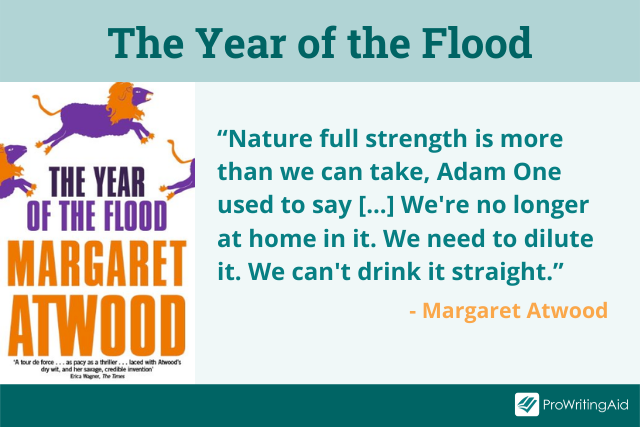
Award-winning children’s book Julie of the Wolves, written by Jean Craighead George, explores the character vs. nature conflict through an Inuit girl on the Arctic tundra.
Through a series of tragic events, Julie finds herself living with a pack of wolves to survive the harsh environment.
The story explores the theme of modernity vs. tradition and cultural evolution. Though written for children, this book is a poignant read for all ages.
The Old Man and the Sea by Ernest Hemingway is a quintessential man vs. nature story.
Santiago, the protagonist, has a respect for nature. It has provided him with his livelihood, and he personifies different elements of the natural world.
But the man vs. nature conflict occurs when he must fight the sea and a giant fish to regain his lost status in society.
The theme that this conflict illustrates is struggle and perseverance.
Those are just a few examples of person vs. nature in literature. Can you think of any more?
What Are the Best Man vs. Nature Movies?
Movies are stories, too, and person vs. nature conflicts are always popular in Hollywood. Here are a few excellent examples.
The 1996 film Twister is a fun example of person vs. nature, specifically natural disasters.
The story follows a group of storm-chasers. Jo is determined to capture readings from inside a tornado.
As the tornadoes get more and more powerful and deadly, the movie shows the dangers of recklessly chasing an impossible goal and the devastation it can leave behind.
Cast Away starring Tom Hanks is another great example.
The man vs. nature conflict occurs when the main character Chuck survives a plane crash and must survive on a deserted island.
The themes of man’s resourcefulness and will to survive are explored as he learns to survive on the island and later finds his way home.
It also explores the theme of nature as a tool to reconnect with what is important in life.

The Day After Tomorrow is an apocalyptic movie released in 2004.
It’s an action film that is also a warning about the dangers of climate change, though with a very Hollywood flare.
A paleoclimatologist warns that climate change could cause a new ice age, but he’s ignored. Then the ice age arrives almost immediately with severe, tragic storms.
The person vs. nature conflict shows people trying to survive this sudden climatological shift.
It illustrates the consequences of human-driven climate change and the dangers of ignoring scientific warning signs.
We’re sure you can think of many other man vs. nature movies, from The Perfect Storm to Sharknado.
There is no shortage of story ideas for character vs. nature conflicts. It’s a great way to use a familiar conflict to illustrate important, relevant themes.
What are your favorite man vs. nature stories?

